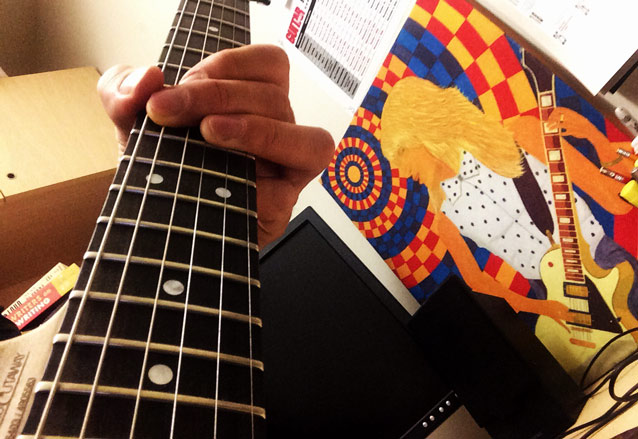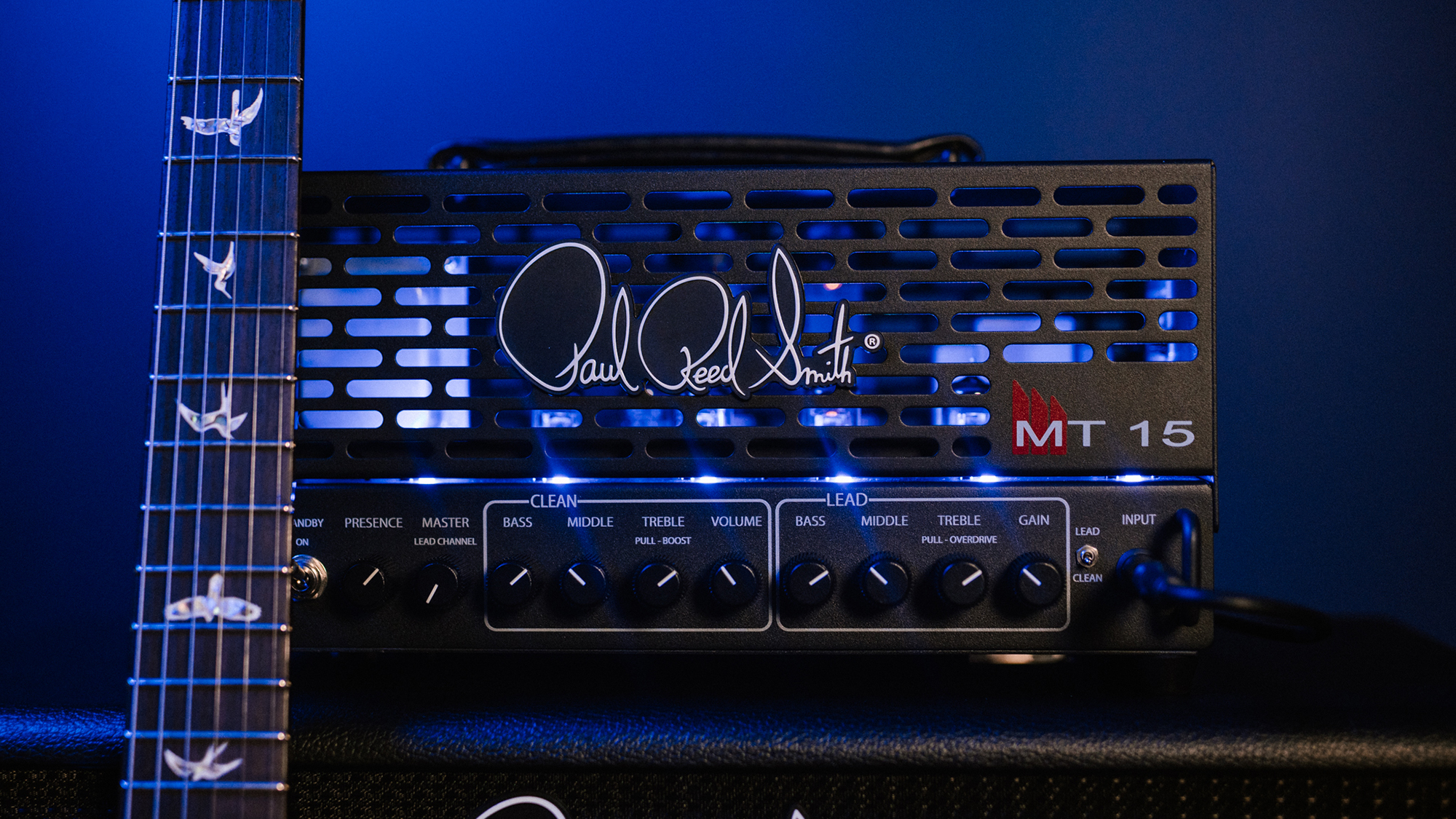Ninth Chords Made Easy
Learn how you can use “rootless” ninth chords to expand your jazz-guitar vocabulary without having to learn any new shapes.

As many of you readers begin to dig deeper into learning jazz guitar harmony and voicings, you'll undoubtedly come across various ninth chords—Maj9, m9, 9, etc.—in your jazz-guitar explorations.
Since these chords pop up time and again, it is important to have a variety of ninth chords under your fingers so that you can bring them into your comping, chord melody and chord soloing ideas when needed. But this doesn’t mean you have to learn a bunch of new chords. You can use previous knowledge to build great-sounding and authentic jazzy ninth chords.
In this lesson, we’ll be looking at how you can use “rootless” ninth chords to expand your jazz-guitar chord vocabulary without having to learn any new shapes, simply adapting four-note chords you already have under your fingers to a new musical situation.
Building Ninth Chords with Common Voicings
To begin, let’s take a look at four common jazz chords with their 1357 and rootless 9th-chord voicings. Notice that each chord pair shares three notes in common: the 3-5-7 of each chord, but that in the second voicing the ninth has replaced the root, which is why we call them “rootless” ninth chords, as they contain no root in the voicing. To get you started, here's a quick reference for the four chords used below.
• Maj7 - m7 from the 3rd
• 7 - m7b5 from the 3rd
• m7 - Maj7 from the 3rd
• mMaj7 - Maj7#5 from the 3rd.
This means that if you see a Dm7 and you want to make it Dm9, you simply play Fmaj7, a Maj7 chord starting on the 3rd of Dm7. Try this out with each of the following chords, Maj7-7-m7-mMaj7, using the quick guide above as a reference, through all 12 keys and with as many voicings for each ninth as you can come up with.

Major ii V I with Ninth Chords
Here are two examples of how you can apply rootless ninth chords to a Major Key ii V I progression, one using Drop 2 and one using Drop 3 chord voicings. As a quick reference, here are the three normal chords, 1357, next to the related rootless ninth chords. If you can memorize these formulas, you will be able to quickly and easily use these chords in any jam or gig you’re on.
• m7 - Maj7 from 3rd
• 7 - m7b5 from 3rd
• Maj7 - m7 from 3rd.
Try these chords out in all 12 keys, both all Drop 2 and Drop 3, then come up with your own rootless ninth chords and bring them into your Major ii V I progressions as you explore this concept further in the woodshed.

Minor ii V I with Ninth Chords
To help get you started in the minor-key area, here is an example of a minor ii-V-I chord progression using both Drop 2 and Drop 3 rootless ninth chords. For the m7b5, we don’t normally include a ninth with that voicing, and so you will notice that I used a plain, 1357 chord in those instances. For the other two chords, G7b9 and CmMaj7, I used a Bdim7 over G7b9, producing a rootless 7b9 chord, and an Ebmaj7#5 over CmMaj7, producing a rootless mMaj9 chord.
As a quick guide, here are the three chords and their related ninth versions:
• m7b5 - stays as is
• 7b9 - dim7 from the 3rd
• mMaj7 - Maj7#5 from the 3rd.
Check out the example below, taking it to all 12 keys if possible, and then build your own ninth voicings for minor ii V I progressions using the rules given above.

Ninth Chord Practice Guide
After you have checked out the different examples above, here are a number of ways that you can explore ninth chords further in your jazz guitar practicing schedule.
1. Play any/all of the above examples in all 12 keys at various tempos.
2. Play the rootless 9th chord for any voicing you are working on and sing the root below the chord.
3. Take a tune you are working on and learn all of the chords as rootless ninth voicings, using the above lesson as a guide to find each ninth chord in the tune.
4. Practice any ninth chord that you learn with a number of different jazz guitar chords such as Drop 2 Chords, Drop 3 Chords and Drop 2 and 4 Chords.
5. Practice arpeggiating each of the rootless ninth chords in the above examples and begin to bring this concept into your soloing ideas as well.
Playing 9th chords, and especially rootless ninths, is an important skill for any jazz guitarist to have under his or her fingers. Check out the above examples and exercises to get started in your exploration of these handy and cool-sounding jazz guitar chords. If you have any questions about these chords, or anything jazz-guitar related, feel free to post it in the COMMENTS section below.
Matt Warnock is the owner of mattwarnockguitar.com, a free website that provides hundreds of lessons and resources designed to help guitarists of all experience levels meet their practice and performance goals. Matt lives in the UK, where he is a senior lecturer at the Leeds College of Music and an examiner for the London College of Music (Registry of Guitar Tutors).
Get The Pick Newsletter
All the latest guitar news, interviews, lessons, reviews, deals and more, direct to your inbox!
Matt Warnock is the owner of mattwarnockguitar.com, a free website that provides hundreds of lessons and resources designed to help guitarists of all experience levels meet their practice and performance goals. Matt lives in the UK, where he teaches Skype guitar students all over the world, and is an examiner for the London College of Music (Registry of Guitar Tutors).








![Joe Bonamassa [left] wears a deep blue suit and polka-dotted shirt and plays his green refin Strat; the late Irish blues legend Rory Gallagher [right] screams and inflicts some punishment on his heavily worn number one Stratocaster.](https://cdn.mos.cms.futurecdn.net/cw28h7UBcTVfTLs7p7eiLe.jpg)

